
The company’s on-site care system is emblematic of risk-management practices that disadvantage workers farther down the supply chain.
Her scar runs from the meat of the palm to mid-hand, a map that tells the story of the body as a machine. Her hands often become numb when she is trying to grab her keys or open the door, causing frustration. For many years, she has worked 10-hour days, four days a week at a Tyson Foods poultry processing plant in the rural town of Green Forest, Arkansas. “Esto se llama carpal tunnel,” she said, tracing the dry riverbed of her scar with a finger.
She asked to be called María, not her real name. In Green Forest in July 2022, a billboard for Tyson advertised a “4-day workweek” and a “$2,000 signing bonus.” Tyson is the only large employer in the town of less than 3,000. As the largest meatpacking company in the U.S. and the second largest in the world, the company processes about 20 percent of all beef, pork, and chicken in the nation. It is headquartered in Arkansas, where 20 plants are the primary employer in small, rural towns like this one.

As a nonprofit journalism organization, we depend on your support to fund more than 170 reporting projects every year on critical global and local issues. Donate any amount today to become a Pulitzer Center Champion and receive exclusive benefits!
Investigation Highlight
- The outsourcing of risk is not new to the industry. The large corporations that process chickens, hogs, cattle and milk into consumer products have long outsourced risks to the farmers and smaller companies that own CAFOs and employ the workers inside. Tyson Foods’ own model now strategically routes injured workers to company nurses and clinics, a process some allege short-circuits injury reports to OSHA, limits scrutiny, and complicates injured workers’ access to healthcare, workers compensation, and damages for life-changing injuries.
- Read the full series here.
At her home, María stood facing a large portrait of her daughter in a fuchsia quinceañera dress. She thinks the pain began in 2017, but the Tyson on-site nurses involved did not provide her with paperwork to document her medical condition, she said, so she isn’t sure of the exact timeframe of events. Feet on worn carpet, the late afternoon light filtering through the curtains, María demonstrated her job at the time. She moved her hands precisely to cut an imaginary chicken wing, making an incision where the wing joins the shoulder and then cutting downwards. If the incision didn’t slice through the tendon completely, she could get hurt.
Although line speed varied, María used to cut 34 wings per minute—around 20,000 per day, and sharpening her knife after roughly every five wings. “That is what injured my hand,” she said. Her injury is not unusual. According to worker interviews and expert research, the prevalence of carpal tunnel syndrome is high in poultry workers. One study found it to be 2.5 times higher than in other manual labor jobs, owing to worker tasks that require repetitive hand manipulation like these: cutting, eviscerating, washing, trimming, and deboning.
Federal Occupational Safety and Health Administration (OSHA) guidelines advise companies like Tyson to rotate employees through such jobs to avoid musculoskeletal disorders. They also urge employers to provide early medical treatment to prevent permanent physical damage. Those things didn’t happen for María. Instead, when the pain got so bad that she couldn’t function, María asked her supervisor—the same one who could grant or deny her permission to use the bathroom—if she could visit the on-site nurse.
“They have you sit there for a bit and put a bag of ice on you for 15-20 minutes and then they tell you to go back to work.”
Tyson offers on-site occupational health nurses to address worker injuries like these. The model is emblematic of others in the meatpacking and poultry industries, designed to streamline efficiency, cut costs, and reduce liability, practices that are being emulated by animal feeding operations farther down the supply chain. Crucially, the on-site nursing model also reduces hospital trips and doctor visits that would otherwise trigger mandatory reporting to OSHA.
It thus obscures federal oversight of injuries and opportunities for workers to receive paid time off, workers’ compensation, and damages when they are hurt. Media investigations have shown that Tyson has a history of retooling workers’ compensation law to benefit the company’s bottom line. Critics say the on-site nursing model does the same.
Explaining the role of nurses inside the poultry plant, María said, “They have you sit there for a bit and put a bag of ice on you for 15-20 minutes and then they tell you to go back to work.”
OSHA does not require employers to report minor injuries that receive such first aid treatment. Workplaces are required to report severe injuries, including amputations, the loss of an eye, and others that require at least a one-night stay in a hospital, directly to OSHA within 24 hours. Injuries that require a simple doctor’s visit, however, are recorded in company logs that feed into reports to OSHA annually. The agency uses those reports to plan inspections of high-hazard workplaces and direct its enforcement. The system is designed to make efficient use of the limited number of OSHA inspectors. Companies can deflect OSHA’s attention, however, if the nurses they employ give injured workers first aid treatments instead of recommending medical care.
This is one of several reasons workers in the Tyson system are not allowed to consult with doctors about an injury unless the on-site nurse recommends it, according to a nurse and several plant workers employed by Tyson. If a worker wants to consult with an outside doctor, they are required to pay for their own care.
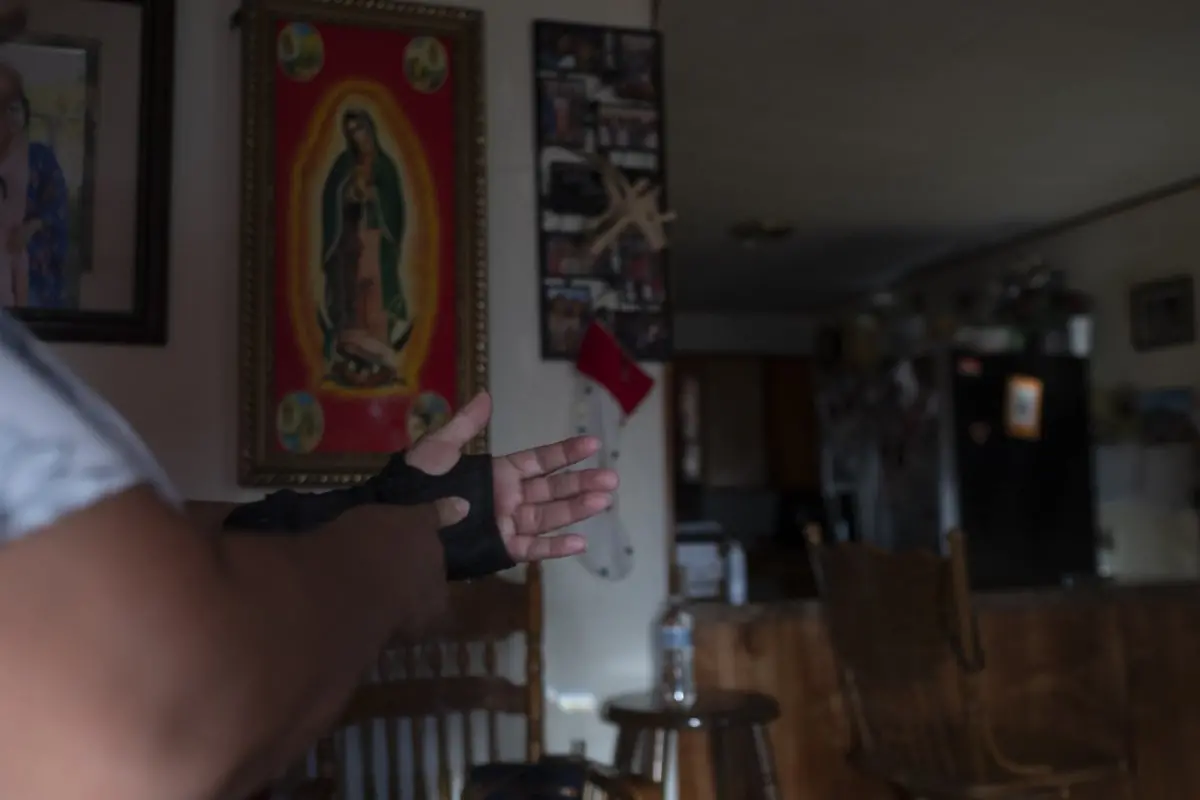
María said she was denied requests to see a doctor despite months of visits to the nurse at the plant in Green Forest. The company, she adds, delayed her access to medical care, proper treatment, and time to heal. Other workers, a former nurse, and federal investigations of the industry say her experience is typical.
Deborah Berkowitz, now a fellow at Georgetown University’s Kalmanovitz Initiative for Labor and the Working Poor, served as chief of staff and then senior policy advisor for OSHA from 2009-2015. She said the on-site first aid model at Tyson is common across the meatpacking and poultry industry.
“Workers in these meat plants have incredibly high rates of carpal tunnel syndrome, but the meat industry has figured out a way to hide these rates from the public,” she said. “OSHA regulations require that only work-related injuries that are serious enough to require medical treatment have to be recorded on official company injury and illness logs. What the industry perfected is a way to avoid having to record these injuries—like carpal tunnel syndrome—by essentially delaying or refusing to send workers or refer workers to see a doctor to get treatment when they are injured or ill from work.”
Tyson officials deny that the company refuses medical care to its employees. In a statement to Civil Eats, company spokesman Derek Burleson said, “The health and safety of our team members is our top priority,” and that the company is committed to providing a safe and healthy workplace. He provided a link detailing its goals.
Burleson added that Tyson requires employees to report their injuries internally, no matter how minor. “We do this because we believe in early intervention. We want workplace injuries and illnesses detected early so they can be immediately addressed,” he said.
Tyson follows a systematic approach for early reporting, intervention, evaluation and treatment of injuries and illnesses, Burleson said, a process that begins with evaluations by on-site nurses and progresses through a series of steps that includes referrals to doctors. He did not respond to María’s charge that on-site nurses did not provide her with paperwork documenting her medical condition or comment on the media investigation of Tyson’s approach to workers’ compensation.
A former nurse who was employed at several Tyson plants said that despite Tyson’s systematic protocol for worker injuries, in practice, the company’s plant managers pressured nurses to provide first aid to workers to avoid having to document them. The nurse, who Civil Eats is identifying as Nurse J, asked to remain anonymous for fear of retaliation.
Nurse J provided copies of an employee manual that detail steps for addressing musculoskeletal injuries at Tyson through the process described by Burleson. That nurse said that each Tyson plant has a nurse manager who is responsible for making decisions about how an injured worker is treated, including when to approve a visit to a doctor. In practice, however, Nurse J said that in some Tyson plants, managers, who have no medical background, pressure nurses to halt the progression of medical care, often entering the room where the injured worker is being treated and providing their assessment of the injury and whether the worker should be approved to see a doctor.
Nurse J said that when a worker appears to be seriously injured, “the plant management team is like, ‘Well, then y’all need to like treat her and keep this from becoming OSHA recordable.’” If the nurse manager makes a decision that is not what the plant managers have recommended, the nurse manager is “given the fourth degree” and asked to try alternative treatments like offering more ice or a soft tissue massage that Tyson calls “art therapy.”
“If you were to take 20 nurse managers and ask them if they ever had pressure from their management, the answer would almost always be ‘yes,’” said Nurse J. Each year, Tyson sets goals for decreasing OSHA recordable injuries at a plant, usually aiming for about a 20 percent decrease, she added. If the plant doesn’t meet its goal, plant managers don’t receive raises or bonuses, she said.
Nurse J’s claims about delayed care at Tyson also appear in documentation from several OSHA inspections at meat and poultry plants and an investigation of the industry by the U.S. Government Accountability Office (GAO) that all found similar patterns.
Rebecca Reindel, the director of occupational safety and health for the AFL-CIO, explained that the Emergency Medical Technicians (EMTs) and Licensed Practical Nurses (LPNs) at poultry and meatpacking companies “are focused on, one, getting people back to work and, two, not having it be reported.” Berkowitz said during a series of investigations, “OSHA also found that in meat and poultry plants there are unsupervised first aid staff who often work outside their legal scope of practice.”
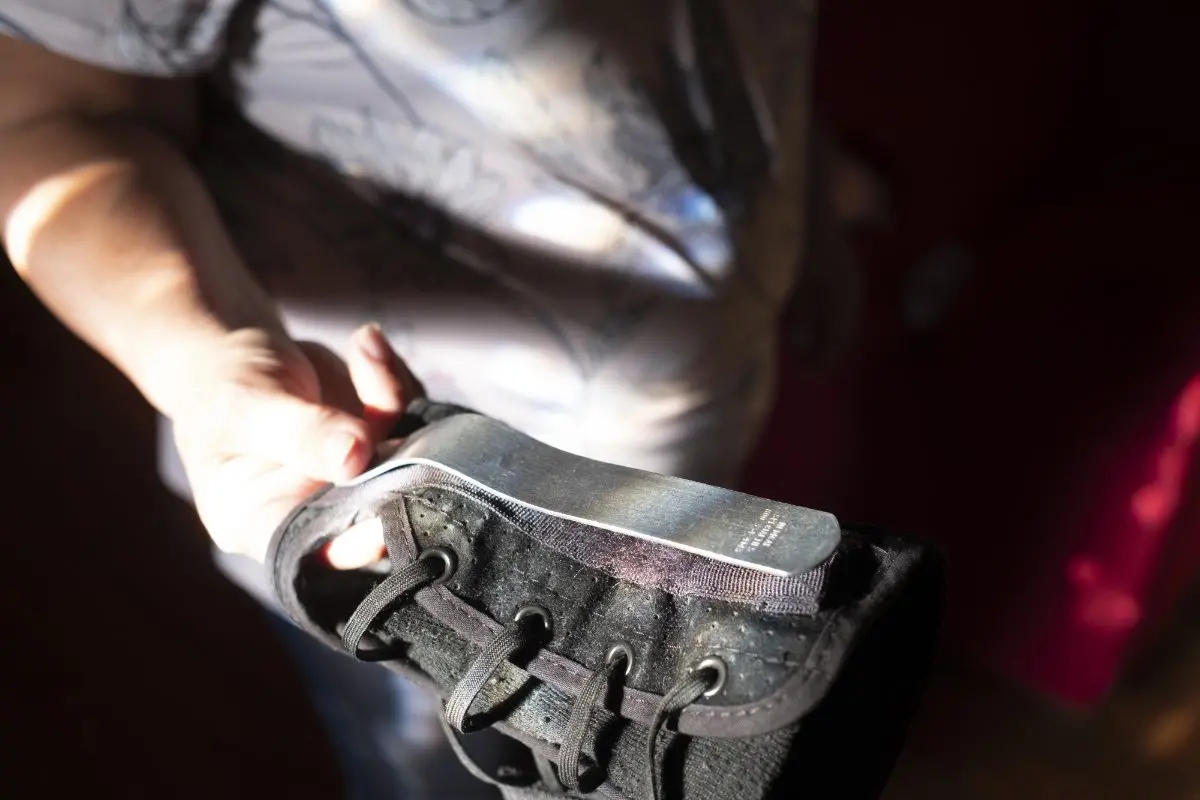
In investigations, OSHA found that plants delayed medical care for injured workers, issuing a citation in one case and hazard alert letters in four others in 2015 and 2016. In the letters, OSHA noted that one plant appeared to use its nursing station to prevent injuries from appearing on the plant’s log and another had prolonged treatment for workers without referring them to a doctor, including a worker who had made more than 90 visits to the nurse. OSHA also found that a number of workers were fired after reporting musculoskeletal disorders at the former plant, some on the same day that they reported injuries.
Tyson employs “more than 1,100 health and safety experts . . . in key health and safety roles at [their] corporate and plant levels” in support of a safe and healthy workplace.
A subsequent investigation of meat and poultry plants by the GAO in 2017 noted that workers in five states similarly reported problems with on-site medical care, including the failure of nurses to make referrals to doctors and delaying medical care, once for a worker with a fractured wrist.
Burleson did not respond to allegations of manager interference in workers’ medical care at Tyson, or the charge that the company was using its nursing stations to prevent injuries from appearing on plants’ injury logs. He said, however, that Tyson employs “more than 1,100 health and safety experts in occupational safety, industrial hygiene, health care, ergonomics, process safety, loss prevention, transportation safety, and other specialists who serve in key health and safety roles at our corporate and plant levels” in support of the company’s commitment to providing a safe and healthy workplace.
Delayed Care, Rushed Return to Work
Over a period of months, María asked to see a nurse several times. She described how her hands hurt and said, “I went to the nurse two times a day and all they did was give me ice and send me back to work. At night I took pills, but oh my God, when I slept around 2 a.m., what pain! The pain woke me up.”
Nurse J confirmed that these experiences were usual. Tyson protocol for musculoskeletal injuries allows nurses to provide ice and pain-relieving medication for up to 28 days, according to the employee manual, and the process can repeat if a nurse deems an injury resolved along the way.
Alexia Kulwiec, associate professor of law at the University of Wisconsin-Madison, teaches labor and employment law and is an expert in national labor policy and workers’ compensation. She said of the on-site health clinics at Tyson, “Their whole goal is not to find serious health problems and to keep costs down. . . . It is really circumventing the whole purpose of worker’s compensation to start with.”
María did not remember the names of the nurses that treated her, noting that they changed frequently. She shared one experience in which a nurse told her that nothing was wrong and she was fine. Returning to the chicken wing line, María was in so much pain she couldn’t work. Another time when she asked to see a nurse, her supervisor sent her to fill out paperwork. She said, “They send it to I don’t know who and they decide if you qualify to see the doctor.” María said she faced many challenges during the eight months she requested to see a doctor, adding, “I have to be dying.”
Berkowitz confirmed the practice is common. “Workers are sort of captive in these first aid stations because companies have policies that state that workers could be fired or disciplined if they seek medical treatment outside the company. Further, the companies make clear that they won’t pay for any medical treatment unless the company sends workers to a doctor. OSHA found repeatedly that meat and poultry companies delay sending workers to a doctor for care, and OSHA found this led to worker injuries worsening over time. Most of these workers have no health insurance.”
Burleson, however, said that Tyson offers its workers a variety of avenues to address concerns about its processes, and that the company’s employment policies encourage workers to bring such concerns to the attention to management, human resources, Tyson’s Employment Compliance Department, or a confidential Tell Tyson First Helpline. “Complaints received through these avenues are investigated and worked to resolution,” he said, adding that workers are trained on these policies.
He did not respond to questions about whether Tyson workers can go to company clinics, called Bright Blue Health Clinics, for injuries without a referral from a plant nurse. The clinics are operated by Marathon Health and “provide primary and preventative care, including health screenings, lifestyle coaching and health education, as well as behavioral health counseling at no cost” to most workers, Burleson said.
María was among those without health insurance who could not otherwise afford to see a doctor on her own. One day as her injury worsened, she tried to grab a bag of groceries but her hands failed her and everything fell on the ground. “I said, “Oh, Lord, help me, help me pick it up.’”
After months, María was finally granted permission to visit a doctor by a plant nurse. “It has to be a Tyson doctor,” she added. Kulwiec said that Arkansas law permits the employer to choose the physician, and instructs employees to go to the employer-chosen physician.
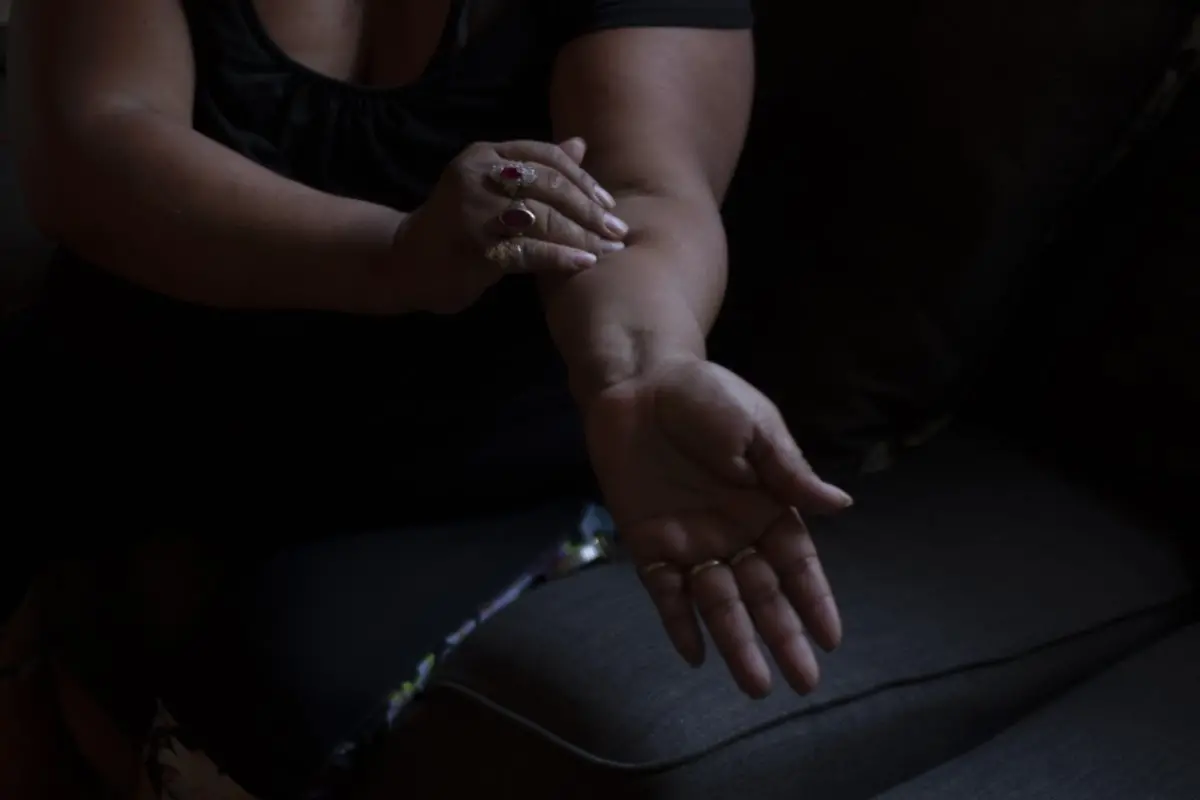
Magaly Licolli, the executive director of the worker-based organization Venceremos, which advocates for the human rights of poultry workers in Arkansas, confirms the industry practice: “The workers have access to health insurance. But . . . the primary doctor has to be related to the company. . . . They control who or when is the time the workers have to seek primary health outside of the company.”
Licolli, who is also a member of the Civil Eats Advisory Board, founded Venceremos in 2019 with a group of women poultry workers. During the pandemic, she organized workers to fight for access to PPE, social distancing, the right to quarantine and take basic leave, transparency about increasing line speeds, and a living wage. She said that on-site healthcare at Tyson is a way to “control the health of the workers because they are seen as machines.”
She also flagged concerns about Tyson chaplains. Tyson has one of the largest private sector corporate chaplaincy programs in the U.S. which includes more than 100 chaplains across 22 states. Licolli said the chaplains are loyal to the company and play on the religious beliefs of workers who come to them with problems to manage dissent. She said the chaplains monitored worker protests, had followed her at events over two years, and that one chaplain came to her home to discourage her from organizing workers.
Nurse J said that workers sometimes talked to Tyson chaplains about their illnesses and injuries. Because the chaplains report to the human resource manager, some workers interviewed said they worried about the personal information shared in confidence being reported to management.
In María’s case, the doctor to whom she was referred, Dr. Tarik Sidani, told her she needed carpal tunnel surgery. However, without Tyson approval, he added that he couldn’t perform it. More months passed, and Tyson nurses sent María to see two additional doctors, both of whom said she needed carpal tunnel surgery. Even then, the surgery wasn’t approved, and María was advised by one of the Tyson doctors to take steroids and get cortisone injections in her hand. She was scared because the doctor told her that while the stopgap measures could reduce her pain, they might also cause diabetes. But she accepted this risk, the pain too overwhelming to bear. The injection also allowed her to continue working—if she missed too many days she would be fired.
Roughly eight months after she made the initial complaint, Tyson approved María’s surgery. “They operated on me on a Friday and by Monday I was working again because if I didn’t return they were going to put me on unemployment and give me half of my check,” she recalled.
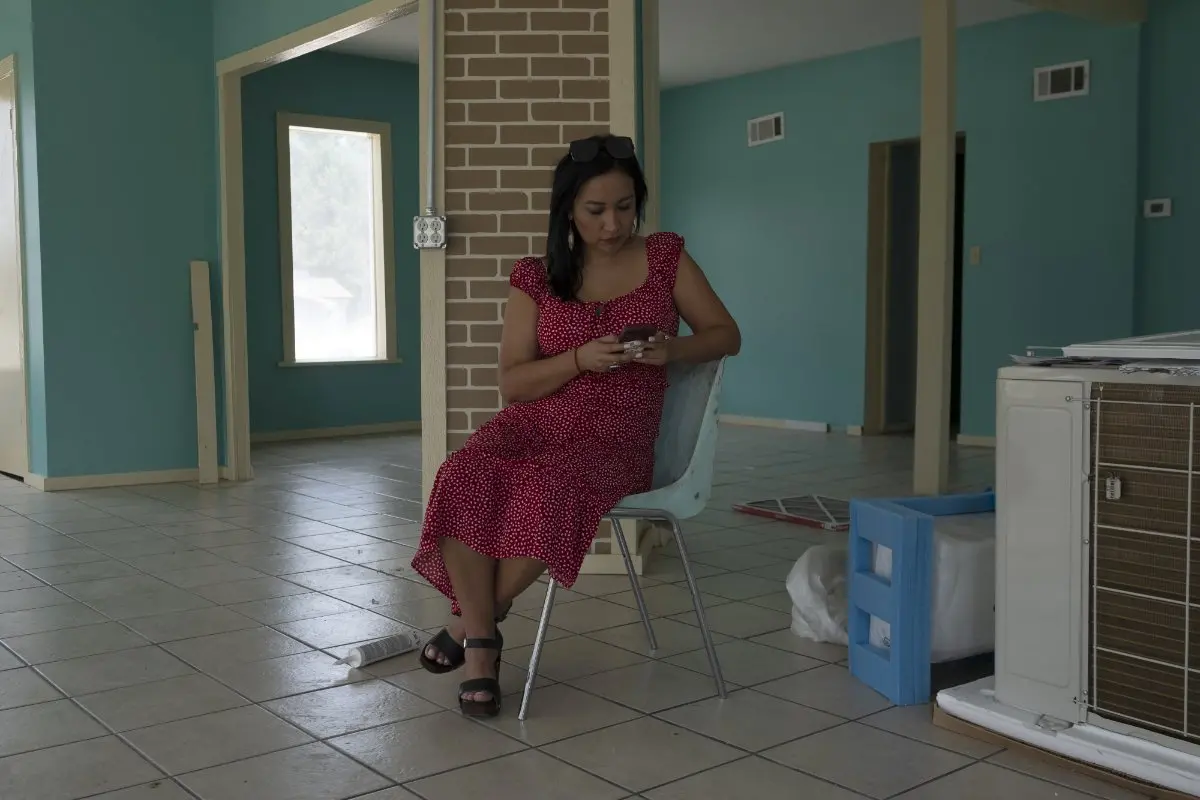
Nurse J said, “That’s very common to have someone have surgery and come back the very next day,” adding that Tyson would lose “safe man hours” otherwise, which is the time a plant’s workers have clocked without injury, also reported to OSHA. Medical experts typically recommend four to six weeks of recovery from carpal tunnel surgery, sometimes more. Dr. Sidani recommended one week of recovery, but María’s supervisor at Tyson told her that it was “not necessary to rest.”
Berkowitz explained that in addition to documenting injuries, “OSHA regulations require companies to record how many days of work somebody misses due to a work-related injury. And so, this way Tyson can say, ‘I don’t have any lost workday injuries.’ This is all about public relations for Tyson—to attempt to hide the number and seriousness of injuries due to unsafe conditions.”
Tyson paid for physical therapy, but when María finished it, she was sent back to the chicken wing line to do the same repetitive movements.
Burleson did not respond to allegations that Tyson delays care for injured workers and does not did not provide proper time off to heal from surgery. He said, however, that Tyson’s poultry operations “have had safety committees and programs for many years that are continually exploring new ways to make production jobs easier. Their efforts include developing improvements in equipment, tools and processes to make jobs less physically demanding.”
Questionable Care, Worsening Injuries
Like María, Rosa is from Guatemala and developed carpal tunnel syndrome while working at the Tyson plant in Green Forest. Unlike María, she is still waiting to get carpal tunnel surgery on both hands.
With the arrival of the pandemic, Tyson Foods increased line speeds, and that exposed workers like Rosa to a greater risk for repetitive motion injuries. “When the pandemic began, many people left because they didn’t want to become sick,” she said, and described being asked to do the job of several people. For the last few years, she has worked 10 hours a day, four to five days a week, deboning white meat.
“They operated on me on a Friday and by Monday I was working again . . .”
In October 2021, after decades of work at Tyson, Rosa requested permission from her supervisor to visit an on-site nurse. She had been experiencing increasing pain in her hands for months and felt unable to continue working. But when she arrived at the nurse’s office, there was no Spanish interpreter available, and, as Rosa explained, the nurse “only put bags of ice on my hands, on my shoulders,” then told her, “Back to work.”
Inside the Green Forest facility, workers speak many languages—including Marshallese, Spanish, Thai, and Vietnamese—but nurses often speak only English. Nurse J said that when interpretation was available, it was often a member of Human Resources that served as a medical interpreter. The situation creates an unequal power dynamic in which an injured worker is expected to speak openly about their injury in front of their superior. Nurse J said, “I think they’re afraid to report that they were hurt.”
When Tyson hires workers, the company provides interpretation and documents in the language of the worker. However, several workers interviewed said that after being hired, most interactions and documents were provided to them in English alone. “The health office doesn’t have staff that speaks those languages,” said Berkowitz.
In a 2000 interview intended for internal company use, Tyson’s then-president Donald “Buddy” Wray noted that language barriers were partly to blame for employee injuries and deaths. “This has been the worst year in the history of our company and all of us should be hit upside the head for it. In a lot of instances, the loss of life has come from lack of training, lack of communication, and lack of understanding . . . We have got to do a better job of communicating in their language,” he said. Burleson did not comment on the translation problems acknowledged by Wray.
Despite communication gaps, Rosa requested to visit an on-site nurse daily as she continued experiencing debilitating pain in her hands. Over the year that she spent talking to a reporter, she described the pain in her hands, and even called crying, asking how she could continue to work while in so much pain. “Sometimes when I wake up to go to the bathroom, my hands are asleep. I have to hit them because they feel dead,” she said.
“I think they’re afraid to report that they were hurt.”
When she described her pain, she said one nurse told her, “We aren’t going to pay for anything.”
Desperate, Rosa sought advice from her husband’s doctor outside of the Tyson system and paid for the visit herself. When Rosa informed an on-site nurse that an outside doctor confirmed she needed carpal tunnel surgery, she was again told that she would have to pay for her own surgery. She felt like it was retaliation.
Burleson, the Tyson spokesman, did not respond to that allegation. Licolli, however, described how distrust can erode worker confidence. “The workers themselves don’t know if the [Tyson] doctors or nurses are capable of doing that job. They don’t trust them,” said Licolli. “They don’t seem like reliable doctors or nurses. They see them more as they just get to be paid by the company and have to say whatever is beneficial to the company.”
The 2017 GAO investigation found that fear of retaliation for medical care was common among workers. In one state, workers told the inspectors they were penalized when they sought care at work. “Meat and poultry workers in three states also said that fear of being reprimanded or losing their jobs sometimes compels them to refrain from accessing care . . . or from complaining about inadequate medical care,” the report noted.
Reindel said that in an on-site health clinic system like Tyson’s, “If they go on their own, it’s not paid for and then it’s often accompanied by punitive or retaliatory measures.”
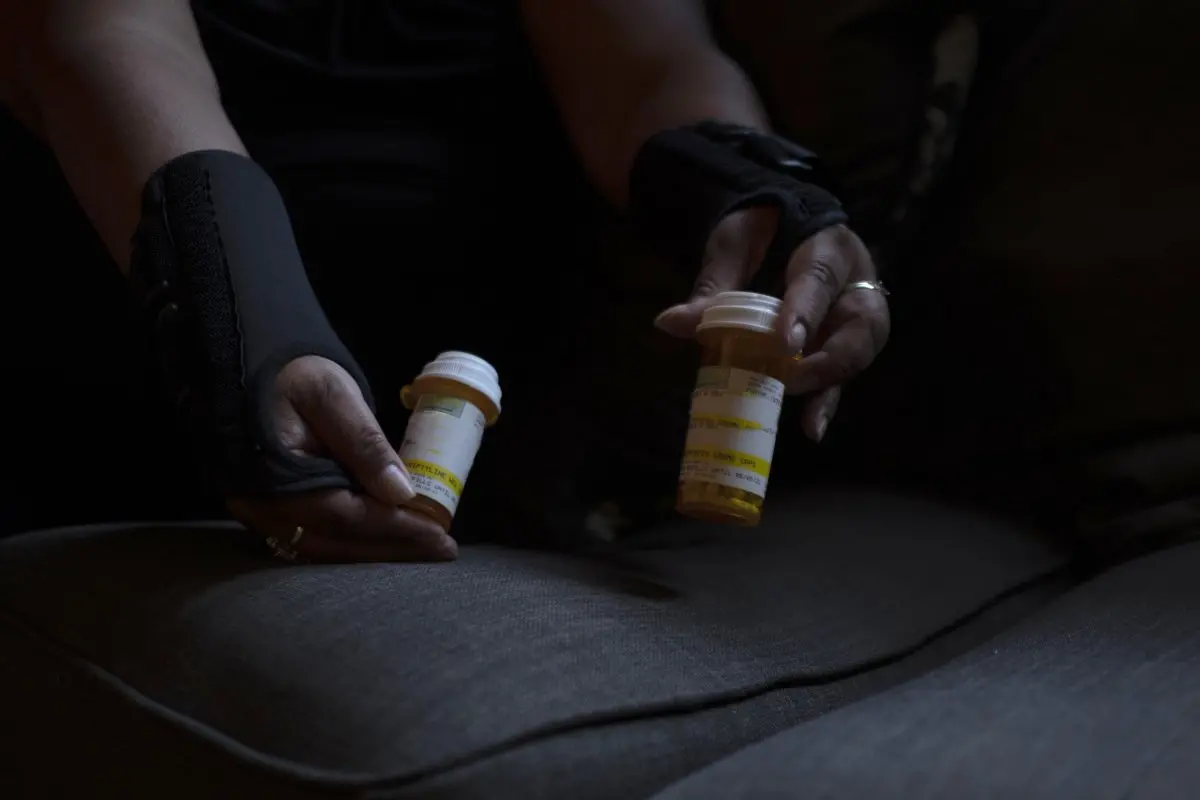
Back at Tyson, Rosa asked to see a nurse regularly, saw doctors, visited a hospital, and spent several months on disability. When a Tyson doctor notified her that she had to return to work, Rosa was moved to a line that required less repetitive movement. Yet she experienced so much pain that she had to request an easier job that paid $3 an hour less. Shortly thereafter, she complained of losing all feeling in her hands and had an accident. When she was finally approved to have an appointment with Dr. Sedani, he confirmed that she needed carpal tunnel surgery but said that he couldn’t operate on her if Tyson had not approved it.
Burleson did not respond to the allegation that Tyson had the authority to authorize surgeries for workers through doctors. He noted, however, that the company does not employ surgeons and that the doctors the company may make referrals to are not, in effect, “Tyson doctors.” “That is a mischaracterization,” he said.
Rosa is dismayed by what has felt like an endless cycle. “I need a lawyer,” she said, her eyes red and tearful, her hands moving to cover her face. “I am fighting for an operation.”
Kulwiec explained that in Arkansas, the legal burden is on employees like Rosa to prove that their injury was caused by an on the job injury or illness, and that can be tough to do.
It is similarly challenging for OSHA to identify when a company is using its first aid clinics to keep worker injuries from becoming reportable, Reindel explained. “Basically, these practices go unchecked,” she said. “It’s dangerous. It’s inhumane. And it doesn’t lend to people receiving the care that they need.”
Indeed, it is rare that OSHA takes action to address such situations of medical mismanagement, chiefly because of scant resources. But in 2016 the agency did ultimately levy $78,000 in fines against Pilgrim’s Pride, another large poultry producer, in part because of the company’s practice of delaying medical care. Berkowitz said of Tyson, “They could set the standard for what every other meat and poultry plant needs to do in terms of protecting workers on the job. And instead, they drive the standard into the ground.”
In July, Rosa said she was afraid because her supervisors and co-workers had stopped speaking to her and gave her dirty looks. “Two months ago, somebody left dead animals under my house,” she said, “armadillos and raccoons.” The smell was so strong it made her and her niece sick. After that, she sent her niece to live with family members. When last interviewed on July 15 as she lay on her couch, clutching two bottles of prescribed pain medication, she said, “If one day you find out that I’m dead, you know my whole story.”
Note: Civil Eats reached out to Tyson multiple times prior to publication for comment regarding how care for workplace injuries is paid for. Tyson did not respond to that question or to statements from workers who said they had been told they would have to pay for care sought from doctors outside the Tyson referral system. After this article was published, Tyson sent Civil Eats the following statement: “If a team member is injured at work and asks to see a doctor, our nurses are instructed to set up a worker’s compensation claim. We pay for worker’s compensation approved medical treatment, including consulting with outside doctors, and team members are not required to pay for their own care.”
















